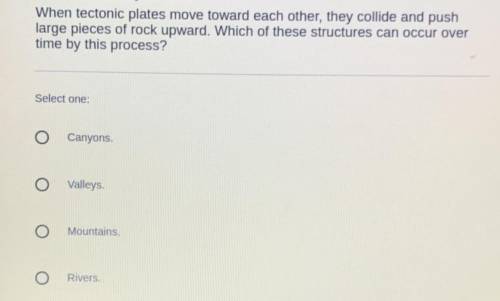Hello please help i’ll give brainliest
...

Answers: 2


Another question on Physics

Physics, 21.06.2019 23:00
We want to calculate the total metabolic heat generated by a singing canary taking into account heat transfer by radiation, convection and exhaling air. the air temperature is 20 oc, canary’s body internal and surface temperature is 33oc, external body surface convective heat transfer coefficient is 25.2 w/m2 .k, temperature difference between the inhaled and exhaled air is 4.3 oc, the ventilation rate is 0.74 cc of air per second, specific heat of air is 1.0066 kj/kg.k and density of air is 1.16 kg/m3 . assume the canary’s body to be a cylinder with 7 cm diameter and 9 cm length, and heat exchange is from the side as well as the top and bottom of cylinder. calculate 1) the net rate of heat lost by radiation, assuming heat gained by the bird through radiation from the surroundings is 11.5 w; 2) rate of heat transferred by convection to the surrounding air; 3) rate of heat transferred in the exhaling air without considering any internal evaporation; 4) total metabolic power.
Answers: 2

Physics, 22.06.2019 17:00
In the future, people will only enjoy one sport: electrodisc. in this sport, you gain points when you cause metallic discs hovering on a field to exchange charge. you are an electrodisc player playing the popular four disc variant. the disks have charges of qa = −8.0 µc, qb = −2.0 µc, qc = +5.0 µc, and qd = +12.0 µc. (1) you bring two disks together and then separate them. you measure the resulting charge of these two disks and find that it is +5.0 µc per disk. which two disks did you bring together? (a) a and b (b) a and c (c)a and d (d)b and c(e) b and d (f) c and d. (2) you bring three disks together and then separate them. you measure the resulting charge of these three disks and find that it is +3.0 µc per disk. which three disks did you bring together? a, b, and c (a) a, b, and d (c) a, c, and d (d) b, c, and d. (3) given the resulting charge of each disk measured in (b) is +3.0 µc, how many electrons would you need to add to a disk of this charge to electrically neutralize it? electrons
Answers: 3

Physics, 22.06.2019 18:00
By what factor does the drag force on a car increase as it goes from 65 to 110 km/h?
Answers: 1

Physics, 22.06.2019 18:30
Ahot-air balloon takes off from the ground traveling vertically with a constant upward acceleration of magnitude g/4. after time interval δt, a crew member releases a ballast sandbag from the basket attached to the balloon. how many seconds does it take the sandbag to reach the ground? (express your answer in terms of δt)
Answers: 2
You know the right answer?
Questions

Engineering, 28.04.2021 14:00


Mathematics, 28.04.2021 14:00

Mathematics, 28.04.2021 14:00




Mathematics, 28.04.2021 14:00



Mathematics, 28.04.2021 14:00

Business, 28.04.2021 14:00


English, 28.04.2021 14:00

English, 28.04.2021 14:00

Mathematics, 28.04.2021 14:00



English, 28.04.2021 14:00

Mathematics, 28.04.2021 14:00




